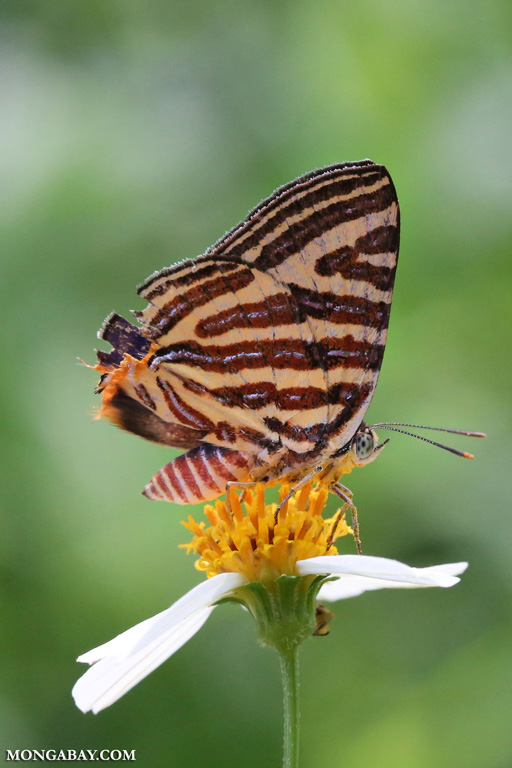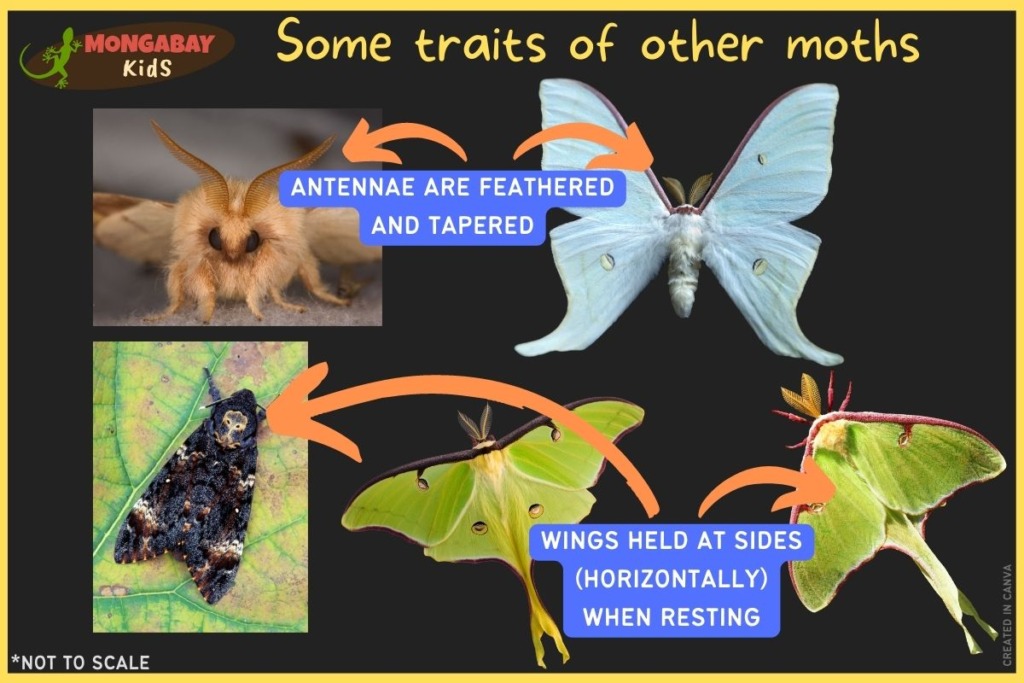Have you ever wondered about the differences between butterflies and moths? We have!
Butterfly:

Moth:

Are butterflies a type of moth?
Yes! The answer is that all butterflies are specialized moths.
Every species of moth and butterfly is a member of the insect group Lepidoptera – another way to say that is that all moths and butterflies are lepidopterans.
Scientists have created an evolutionary tree of the Lepidoptera showing how all of the species are related to each other. An evolutionary tree is also called a phylogenetic tree or a phylogeny.
The Lepidoptera phylogeny shows that butterflies form one unified group within all of the species of moths. This means that butterflies are really moths too.

So how can you tell a butterfly apart from other types of moths?
There are several things that distinguish the butterflies from the other moth groups. Here are a few:
1. Time of activity
A main difference between butterflies and other moths is the time of day when they are active. An active butterfly could be flying, eating, or otherwise keeping busy. Butterflies are usually diurnal (active during the day) and the other moth groups are usually nocturnal (active at night). There are exceptions to this general rule.
2. Antennae
Butterflies’ antennae are shaped like clubs (clubbed). Butterfly antennae have a long narrow shaft with a wider bulb at the end. The antennae of moths are not clubbed. Moth antennae are feathery-shaped or saw-edged and they taper (become narrower) at the end.

3. Wing position
Butterflies hold their wings together (vertically above their bodies) when resting. Moths hold their wings horizontally (at their sides) when resting.

4. Pupa
All lepidopterans go through 4 stages in their life cycle: egg, larva (caterpillar), pupa, adult.
A butterfly pupa is called a chrysalis. A chrysalis is hardened shell that protects the butterfly as it transforms into an adult.
Moths pupate too. A cocoon is a silk casing that a moth spins around itself before it pupates. The pupa pupa forms inside the cocoon. Not all species of moths make cocoons, though.

This video is a good summary of what you’ve just learned:
Wow! Did you know?
There are approximately 180,000 species of Lepidoptera known to science. Approximately 10% of those species are butterflies. The rest are other kinds of moths. Lepidopterans are one of the largest groups of animals on Earth!
People discover new species of lepidopterans every year. Because many moths are active at night, lepidopterists (scientists who study lepidopterans) have to stay up late and use special ways of observing these amazing animals!

Become a moth-er!
If you’d like to help discover new moth species, you can join a mothing event! Mothing is a fun activity that involves spotting and identifying as many moths as you can. Visit nationalmothweek.org for more information about events in your area.
We also recommend the Seek app by iNaturalist. This fun and interactive app is a great way to learn to identify butterflies and other lepidopterans in your neighborhood. Explore nature with a parent, friend or classmate!
You may also like these stories
How many legs does a caterpillar have?


More resources
Florida Museum: Butterfly FAQ
The Library of Congress: guide to the differences between moths and butterflies
ASU: Ask a Biologist – a detailed description of the life cycle of a monarch butterfly
Cambridge Butterfly Conservatory: cocoon vs chyrsalis
Understanding Evolution: a kid-friendly and adult-friendly field guide to evolutionary trees








